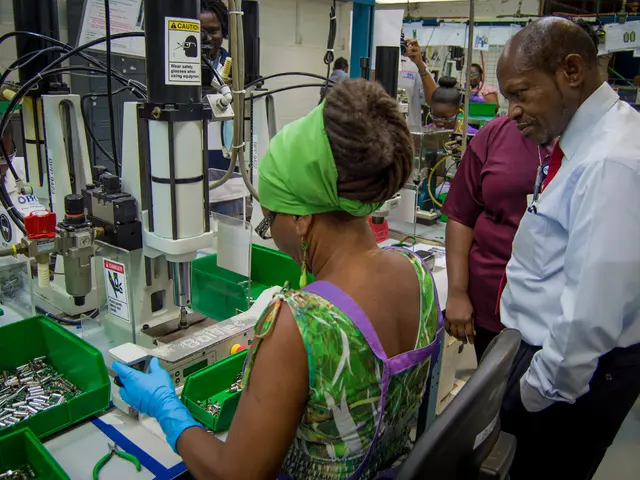Importance of Ball Screw Efficiency in Current Industrial Machinery Operations
In the realm of machinery, efficiency is paramount, and nowhere is this more evident than in the use of ball screws. These versatile components convert rotary motion into linear movement with remarkable accuracy, making them indispensable in various sectors such as aerospace, robotics, and medical equipment.
At the heart of ball screw efficiency lies lubrication. A well-oiled machine, quite literally, ensures minimal friction, protecting the machine from rust and oxidation, and enhancing its lifespan. The choice of lubricant can significantly impact efficiency, with the correct lubricant reducing friction and wear.
Optimizing preload settings is another strategy to boost efficiency. Preload determines positional accuracy and rigidity, while also influencing the rolling friction between components. However, excessive preload increases resistance, while insufficient preload can lead to ball skidding and reduced precision.
The lead angle of ball screws can also impact their efficiency. A larger lead angle can increase efficiency but may compromise the load capacity. Adjusting the lead angle is a fine balance that requires careful consideration.
Consistent load direction increases ball screw efficiency, as direction reversals lead to more internal friction and dynamic losses. Closely monitoring the alignment and installation of ball screws can enhance their efficiency, ensuring they operate smoothly and accurately.
Operating conditions, such as temperature, humidity, and vibration, play a significant role in ball screw efficiency. Machines in extreme conditions may require special considerations to maintain their efficiency.
In industrial sectors, the efficiency of ball screws directly influences machine precision, energy consumption, and the longevity of mechanical systems. This, in turn, leads to increased productivity and reduced operational costs. Inefficient ball screws can cause CNC machines to operate at lower feed rates and consume more energy, leading to higher costs and carbon emissions.
Reliable machines, including those in aerospace and medical device manufacturing, are ensured by high-efficiency ball screws. In the medical imaging sector, low-efficiency ball screws can negatively impact imaging precision and the responsiveness of machines used in these processes.
Components tend to wear down more rapidly when ball screws are inefficient, leading to increased maintenance costs and potential downtime. Real-time monitoring of machinery performance can help make adjustments to increase ball screw efficiency, ensuring optimal operation and longevity.
In conclusion, enhancing the efficiency of ball screws can lead to a decrease in energy costs and carbon emissions, contributing to a more sustainable and productive industrial landscape. By optimizing design parameters, using high-quality materials and coatings, ensuring proper lubrication, maintaining precise alignment, and monitoring operating conditions, we can ensure our machines operate at their best, enhancing precision, productivity, and profitability.
Read also:
- Aurubis enhances shaft furnace at Avellino facility to elevate copper wire rod manufacture output
- China's economic bond with Pakistan expands as new projects are launched under the CPEC 2.0 initiative, marking a significant step in the ongoing collaboration.
- Gigantic Electric Vehicle Manufacturer, Rivian, Launches Construction of $5 Billion Factory in Georgia
- Realty company Prastha receives RERA approval, sets pace with swift sales of high-end plots, raising the bar in the industry








